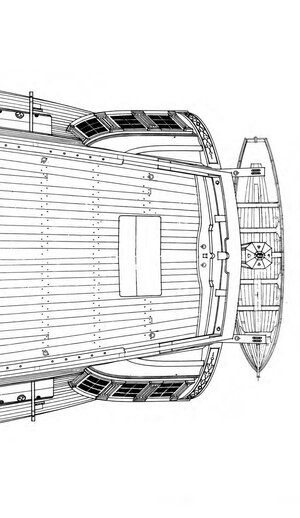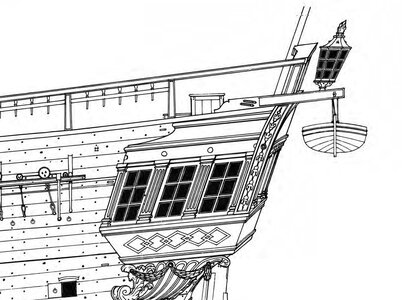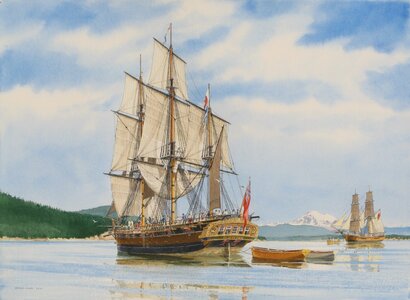I'm putting this out here where more people may see it and give their opinions rather than on my build log. https://shipsofscale.com/sosforums/threads/hms-discovery1789-scratch-build-in-1-48.8325/
I have images of a couple of paintings by Steve Mayo. In both of them he shows stern davits on the Discovery1789. It's a little early for stern davits that supposedly came 5-10 years later but he claims he has provenance in the form of a painting made in 1790. This got me thinking of putting davits on my model but I wanted a little more. I am reading Vancouver's journal and found an intriguing little story Volume 1 pg 424. After Vancouver gave up trying to navigate the Columbia River on Oct 21 1792 they headed south. They were in storms until Nov 3 when seaman John Davison was washed overboard. Fortunately he was a good swimmer and stayed afloat until he was rescued using "our small boat from the stern". This caught my eye. That could be the boat from the stern davits. But, quite often they towed their boats, it could be one of those. Another but, if they were planning to be at sea for about three weeks wouldn't they load all the boats, especially when the weather started getting rough.
Waddaya think? Davits or towed boat?
I have images of a couple of paintings by Steve Mayo. In both of them he shows stern davits on the Discovery1789. It's a little early for stern davits that supposedly came 5-10 years later but he claims he has provenance in the form of a painting made in 1790. This got me thinking of putting davits on my model but I wanted a little more. I am reading Vancouver's journal and found an intriguing little story Volume 1 pg 424. After Vancouver gave up trying to navigate the Columbia River on Oct 21 1792 they headed south. They were in storms until Nov 3 when seaman John Davison was washed overboard. Fortunately he was a good swimmer and stayed afloat until he was rescued using "our small boat from the stern". This caught my eye. That could be the boat from the stern davits. But, quite often they towed their boats, it could be one of those. Another but, if they were planning to be at sea for about three weeks wouldn't they load all the boats, especially when the weather started getting rough.
Waddaya think? Davits or towed boat?









